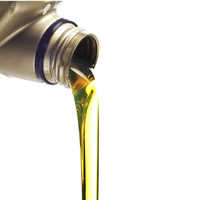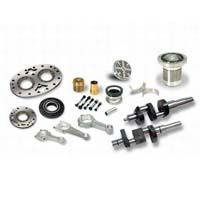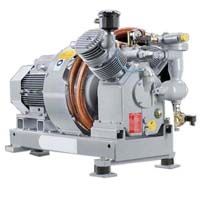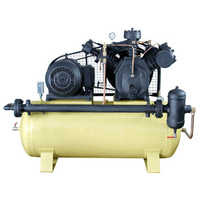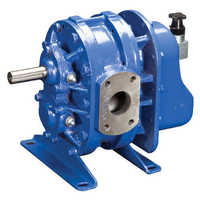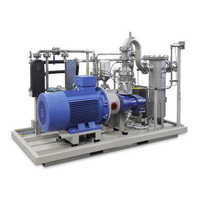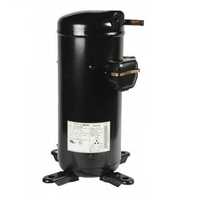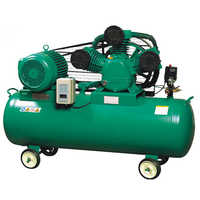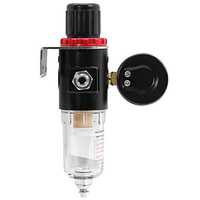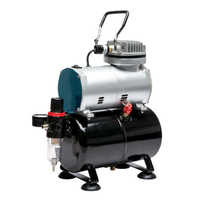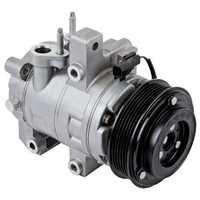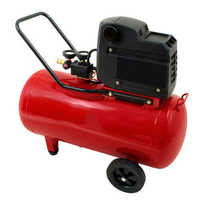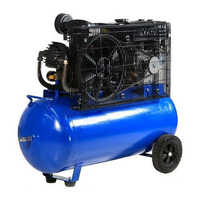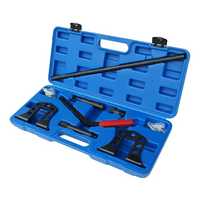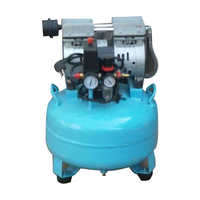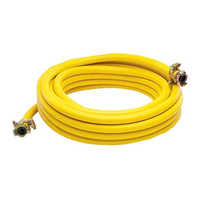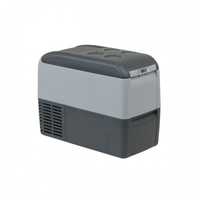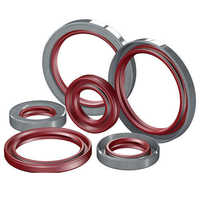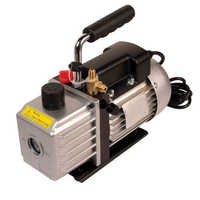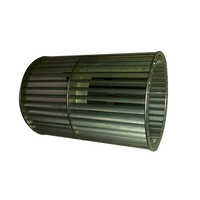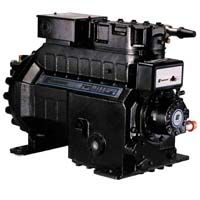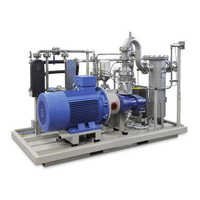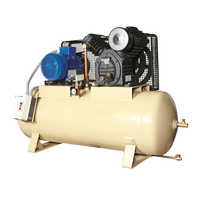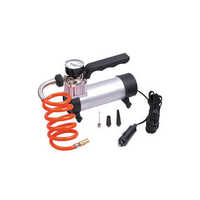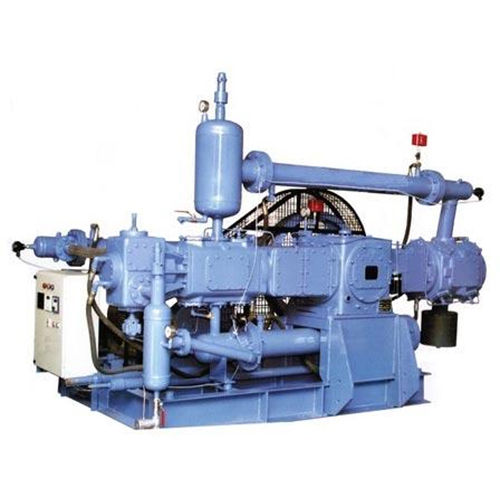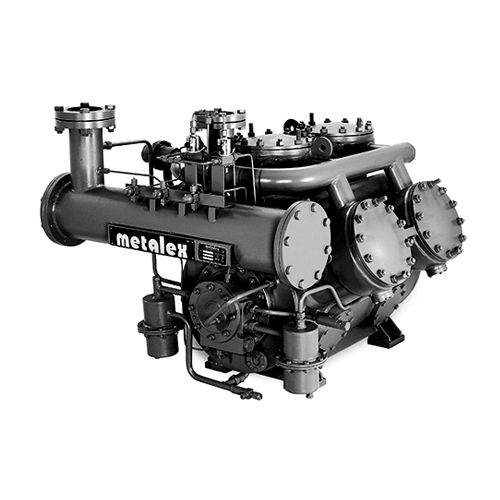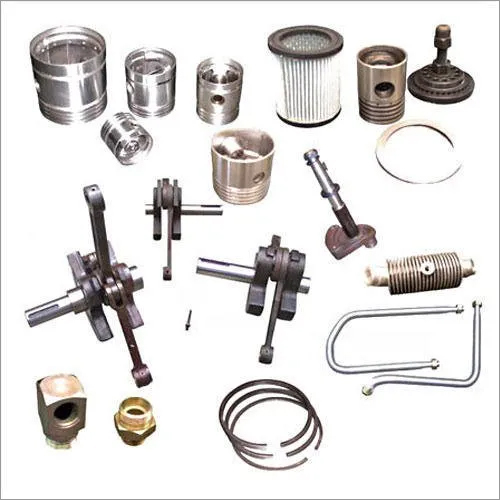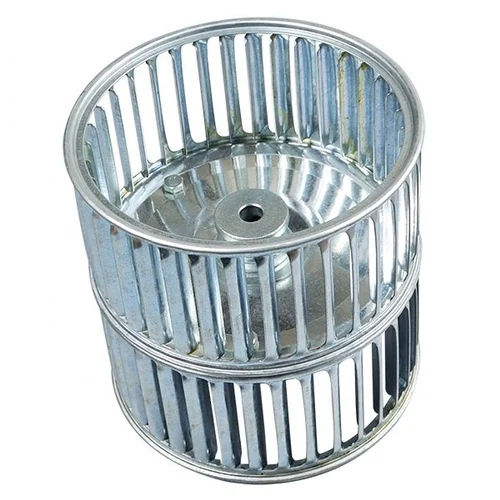Compressors & Allied Equipment
(4310 products)
Top Compressors & Allied Equipment Categories
Explore More Categories
Product Showcase
Compressors Spares Parts
Price Trend: 1500-45750 INR (Approx.)/Unit
MOQ - 1 Unit/Units
Product Type - Spares Parts
Usage - Compressors
5 Years
Business Type: Manufacturer | Exporter
PRS COMPRESSORS PVT. LTD.
Made in India
Silver Double Inlet Impeller
Price: 600 INR (Approx.)/Piece
MOQ - 10 Piece/Pieces
Usage - Industrial
Color - silver
Material - Aluminium
14 Years
Response Rate: 82.22%
Business Type: Manufacturer | Exporter
RE BLOWERS INDIA PRIVATE LIMITED
Made in India
Industrial Air Compressor
Price: 110000 INR (Approx.)/Unit
MOQ - 1 Unit/Units
17 Years
Business Type: Manufacturer | Supplier
AIR VAC EQUIPMENT
Made in India
Stainless Steel Rotary Air Compressor
Price: 60000 INR (Approx.)/Piece
MOQ - 1 Piece/Pieces
Product Type - Rotary Air Compressor
Usage - Industrial
Type Of Compressor - Turbo
16 Years
Business Type: Manufacturer | Exporter
LEELAM INDUSTRIES
Made in India
Air Compressor / Dryer & After Coolers
15 Years
Business Type: Manufacturer | Exporter
DYNAMIC ENTERPRISES INC.
Made in India
Danfoss Condensing Units Voltage: 220 Statampere (Sa)
Price Trend: 30000 - 250000 INR (Approx.)/Number
MOQ - 1 Number
Voltage - 220 Statampere (sA)
Driven Mode - Electric
9 Years
Business Type: Distributor | Supplier
ISHWAR CLIMATE SOLUTIONS PRIVATE LIMITED
Made in India
Direct Drive Screw Compressors
4 Years
Business Type: Manufacturer | Exporter
BERLIN MACHINERIES PRIVATE LIMITED
Made in India
Lubricated Ammonia Single Cylinder Compressor
Price Trend: 300000.00 - 1200000.00 INR (Approx.)/, Set
MOQ - 1 , Set/Sets
Usage - Cold Storages , Chilling Plants , Dairies , Ice Plants.
Type Of Compressor - Piston
Allied Equipment - Other
13 Years
Business Type: Manufacturer | Supplier
METALEX CRYOGENICS LTD.
Made in India
Twin Lobe Air Blower
12 Years
Business Type: Manufacturer | Distributor
KPT INDUSTRIES LIMITED
Made in India
PG 45E-7 Electrical Screw Air Compressor Trolley
3 Years
Business Type: Manufacturer | Supplier
ELGI Equipments Limited
Made in India
Diaphragm Idmc Bunging Device
MOQ - 1 Unit/Units
Usage - Industrial, Automobile
Product Type - Bunging Device
Type Of Compressor - Diaphragm
3 Years
Business Type: Manufacturer | Distributor
WELD ARC ENGINEERS
DN20~DN200 Aluminum Pipe for Solar PV Project
MOQ - 1 Piece/Pieces
Product Type - Aluminum Pipe
2 Years
Business Type: Manufacturer | Supplier
SHANGHAI HAI HONG SHUN INDUSTRIAL CO., LTD..
Made in India
Black Zf40 Emerson Copeland Compressor
Price: 95,000 INR (Approx.)/Piece
MOQ - 1 Piece/Pieces
Color - Black
Usage - Industrial
Type Of Compressor - Other, Scroll
Business Type: Supplier | Exporter
A.K Trading
Made in India
Dc Fan Motor Series Air Oil Cooler Usage: Industrial
Price: 4065 INR (Approx.)/Piece
MOQ - 1 Piece/Pieces
Product Type - Dc Fan Motor Series Air Oil Cooler
Usage - Industrial
Weight - 2 Kilograms (kg)
2 Years
Business Type: Trading Company
Durga Hydraulics
Yellow & Gray Rotary Screw Compressors
Price Trend: 300000-7500000 INR (Approx.)/Unit
MOQ - 1 Unit/Units
Color - Yellow & Gray
Usage - Industrial
Product Type - Rotary Screw Compressors
9 Years
Business Type: Distributor | Service Provider
ADVANCED EQUIPMENTS AND SOLUTIONS PRIVATE LIMITED
Made in India
Air Receiver
2 Years
Business Type: Manufacturer | Supplier
SUMMITS HYGRONICS PRIVATE LIMITED
Fluid Regulator - Color: Silver
Price Trend: 200.00 - 210.00 USD ($) (Approx.)/Set
MOQ - 10 Set/Sets
Color - Silver
Usage - Industrial
Size - Standard
6 Years
Business Type: Manufacturer | Distributor
JO LONG MACHINE INDUSTRIAL CO., LTD.
Made in India
Lubricated Packing Seal Assembly
Price: 3,145 INR (Approx.)/Piece
MOQ - 10 Piece/Pieces
Size - Different available
Usage - Industrial
Configuration - Portable
Business Type: Supplier | Trading Company
Mahad Infrastructure Private Limited
Made in India
Super Tech Compressor Vacuum Pump In Ghaziabad Super Tech Engineers
4 Years
Response Rate: 70.00%
Business Type: Manufacturer
SUPERTECH ENGINEERS
Indian Inquiries Only
Made in India
Cement Silo Compressor Application: Industrial
Price Trend: 110000.00 - 150000.00 INR (Approx.)/Unit
MOQ - 1 Unit/Units
Product Type - Compressor
Material - Cast iron, Other
Finish - Painted/Polsihed, Other
6 Years
Business Type: Manufacturer | Supplier
AIR VAC EQUIPMENTS
Blue/ Yellow/Green/Grey/Red (Customised Colour Available) Tractor Trolley Mounting Compressor (Khosla Kg2)
Price: 98500.00 INR (Approx.)/Unit
MOQ - 1 Unit/Units
Height - 1.5 Meter (m)
Width - 1.5 Meter (m)
Weight - 500 Kilograms (kg)
2 Years
Business Type: Trading Company
VISHAL PNEUMATIC TOOLS
Made in India
Carter Vfd Compressor For Industrial Use Power Source: Ac Power
Price: 1000000 INR (Approx.)/Set
MOQ - 1 Set/Sets
Product Type - AIR SCREW COMPRESSOR
Type Of Compressor - Screw
Configuration - Other
9 Years
Business Type: Supplier | Service Provider
CARTER UNIQUE GROUP
Indian Inquiries Only
Made in India
Forging Crank Shaft Model- Single Stage Compressor (PCT 20)
2 Years
Business Type: Manufacturer | Supplier
PIONEER'S SERVICEES
Dental Air Compressors Gx-800 Power Source: Ac Power
Price Trend: 12500.00 - 20000.00 INR (Approx.)/Unit
MOQ - 50 Unit/Units
Configuration - Portable
Power Source - Ac Power
Silent - Yes
13 Years
Business Type: Distributor | Exporter
DEVAL ENTERPRISE LLP
Made in India
Oil Coolers 50 Hz In Faridabad Aab Heat Exchangers Private Limited, Frequency: 50 Hz
19 Years
Business Type: Manufacturer | Supplier
AAB HEAT EXCHANGERS PVT. LTD.
Blue Sy 300 A4Cbe Danfoss Scroll Compressor
Price: 85000 INR (Approx.)/Piece
MOQ - 1 Piece/Pieces
Usage - Domestic, Commercial & Industrial
Weight - 164 Kilograms (kg)
Product Type - SY 300 A4CBE Danfoss Scroll Compressor
2 Years
Business Type: Manufacturer | Supplier
NEW GALAXY REFRIGERATION
Indian Inquiries Only
Made in India
Blue And Black Compression Elbow
MOQ - 250 Unit/Units
Color - Blue and Black
Size - Different Size
Usage - Industrial
1 Years
Business Type: Manufacturer
EARTH WATER PIPE FITTINGS PRIVATE LIMITED
Made in India
Oil-Free Two Stage Air Compressors
Price: 15000 INR (Approx.)/Unit
MOQ - 1 Unit/Units
Usage - For Commercial Use
Product Type - Air Compressors
Color - Green
21 Years
Business Type: Manufacturer | Distributor
INTEGRATED ENGINEERS & CONTRACTORS
Compressors & Allied Equipment Manufacturers | Suppliers in India
| Company Name | Location | Member Since |
|---|---|---|
| Integrated Engineers & Contractors | Sonipat, India | 21 Years |
| Aab Heat Exchangers Pvt. Ltd. | Faridabad, India | 19 Years |
| Air Vac Equipment | Ahmedabad, India | 17 Years |
| Leelam Industries | Ahmedabad, India | 16 Years |
| Dynamic Enterprises Inc. | Pune, India | 15 Years |
| Re Blowers India Private Limited | Mumbai, India | 14 Years |
| Metalex Cryogenics Ltd. | Pune, India | 13 Years |
| Deval Enterprise Llp | Ahmedabad, India | 13 Years |
| Kpt Industries Limited | Pune, India | 12 Years |
| Ishwar Climate Solutions Private Limited | Mumbai, India | 9 Years |
Compressors & Allied Equipment - Overview
In 1937, Allied Equipment established a new distribution center at 545 East 4th Street. The company distributed a wide variety of products, including snow plows, LED traffic signals, and farm machinery. A gas compressor is a machine that reduces the gas's volume in order to increase its pressure.
In addition to air, natural gas, oxygen, and nitrogen—all of which have significant industrial applications—are also compressed. Compressors can be categorized into three broad categories: positive displacement, centrifugal, and axial.
A high-speed impeller in a centrifugal compressor boosts the gas's kinetic energy, which is then converted to more pressure in a diffuser located at the compressor's divergent exit.
What type of equipment is an air compressor?
1. Rotary Screw compressor
Displacement compressors like rotary screws are among the most user-friendly, thanks to their built-in cooling systems that require little attention.
These machines are primarily used in industrial settings and are very huge. To provide power, rotary screw air compressors use two rotors spinning in opposite directions inside the machine. As the air builds up between the two rotors, the pressure inside the housing increases.
These air compressors have a horsepower range from 5 to 350 and feature an internal cooling system, making them suitable for 24/7 operation.
2. Reciprocating Air Compressors
Other common displacement compressors use a revolving compressor. They are commonplace in garages and domestic construction sites.
The reciprocating compressor, in contrast to the rotary screw compressor, is not intended for nonstop operation.
When it comes to moving parts, a reciprocating air compressor has more, and these are maintained with oil to provide a more efficient and quiet operation. In a reciprocating compressor, a piston moves within a cylinder, compressing and displacing air to increase pressure.
The pressure ranges that can be attained by different types of reciprocating compressors depend on whether or not they are single-stage or multi-stage designs.
3. Axial Compressors
Power is produced by dynamic Compressors & Allied Equipment, which work by drawing in air with rapidly spinning blades and then compressing it to increase pressure.
Then, the compressor will take that kinetic energy and convert it to static energy. When it comes to dynamic compressors, axial and centrifugal designs dominate the market.
Normal construction practices tend to avoid the use of axial air compressors. Instead, you can find them in the high-powered engines of ships and jets.
4. Centrifugal Compressors
Because of their high efficiency rate, axial compressors are well suited for aerospace applications needing high horsepower, but they are also significantly more expensive than other types of air compressors.
Air entering a centrifugal compressor is slowed and cooled by a diffuser to increase its potential energy. Since centrifugal compressors use a multi-phase compression process, they may generate a lot of power despite their compact size.
5. Oil Flooded Air Compressor
Compressors can also be categorized based on their lubrication, which can be either oil-flooded or oil-free. Compressors that are "oil flooded" have oil lubricating their moving parts. In particular, their compression chambers are sealed and lubricated with oil.
Oil-flooded designs are common in rotary screw and reciprocating compressors.
Oil-flooded compressors tend to last longer because of the regular lubricating they receive. But they can leak lubricant into the compressed air and ruin it.
6. Oil-Free Air Compressor
In contrast, oil-free air compressors don't use any kind of oil in the compression process. Instead, their moving parts are pre-lubricated with a long-lasting alternative lubricant that is integrated into the design. This means they can generate pollution-free air by removing all residues of potentially dangerous oil.
Generally speaking, centrifugal compressors don't require oil, and there are also oil-free rotary screw and reciprocating compressors.
These may cost more, but they're more efficient (meaning they use less energy) and quieter (meaning they don't disrupt your workday as much) than the alternatives. Because of these benefits, they are well-suited for building in high-traffic regions or environmentally conscious settings.
7. Scroll Air Compressor
According to international standards, scroll compressors create the cleanest air. Construction projects or businesses with stricter environmental requirements may benefit from using such equipment.
They are also adaptable, as they can function at a range of intensities. Scroll compressors are low-noise and low-maintenance, but they aren't the most powerful option available.
Although a different kind of compressor may be needed for heavy-duty tools and machinery, the passive uses are best suited to the more lightweight compressors.
Understanding Compressors : Types
i. Piston Compressor
Compressing gas in a cylinder (or cylinders) and releasing it through valving into high pressure receiving tanks is the job of a piston compressor, also known as a reciprocating compressor.
The tank and the compressor are frequently assembled into a single "packaged unit" on the same frame or skid.
Although delivering compressed air as an energy source is where piston compressors shine the brightest, pipeline operators also rely on piston compressors when transporting natural gas.
Both the desired pressure (in psi) and the desired flow rate play a role in determining which piston compressor to use (scfm).
ii. Diaphragm Compressor
It's an improved version of the reciprocating type, driven by a motor-mounted eccentric that vibrates a movable disc to increase and decrease the size of the compression chamber.
Similar to a diaphragm pump, the flexible disc separates the drive from the process fluid, preventing lubricant from mixing with any gas.
iii. Helical Screw Compressor
For applications that require constant use, such as construction or roadwork, a helical-screw compressor is an excellent choice among rotary compressor machines.
Geared based Compressors, meshing female and male draw in gas, compress it as the gas passes axially along the rotors' length, and then release the compressed gas through a port on the opposite end of the compressor casing. Because of the rotary screw compressors lower vibration, it operates more quietly than a reciprocating compressor.
iv. Sliding Vane Compressor
Sliding-vane compressors use a set of vanes mounted on a rotor to move down the curved wall of an eccentric chamber. As the vanes spin from the suction side to the discharge side of the eccentric cavity, they diminish the volume of space they are sweeping by, compressing the gas that is trapped within the space.
An oil film forms on the wall of the eccentric chamber, and the vanes slide along it, creating a seal. Although oil-free air from sliding-vane compressors is not possible, pulsation-free compressed air can be produced. Because of the low operating speeds and the use of bushings instead of bearings, these compressors are tolerant to environmental pollutants.
v. Scroll air Compressor
In a scroll air compressor, the volume of space between the fixed and orbiting spirals is reduced as the latter follow in the fixed spirals' footsteps. The gas is sucked in at the edges of the scrolls and released from its compressed state in the middle.
The compressor does not require any lubricating oil because the scrolls do not come into contact with one another.
Capacity for scroll compressors is limited due to the absence of oil used in other systems to remove the heat of compression.
vi. Centrifugal Compressor
Pump-like impellers spin rapidly in centrifugal compressors, increasing the kinetic energy of the gas and thus the pressure.
They are typically found in high-output applications such commercial refrigeration units (100 hp+) and large processing plants (20,000 hp+, delivering quantities of up to 200,000 cfm+).
To enhance the speed of gas, centrifugal compressors work by propelling it outward at high velocities via a rotating impeller, much like a centrifugal pump. The gas's velocity decreases and its pressure increases as it expands inside the casing's volute.
8. Axial Compressor
Axial compressors can produce the highest supplied air volumes, anywhere from 8,000 to 13 million cfm, making them ideal for use in large industrial machinery. Compressors of this type are used in jet engine systems to create volumes throughout an even larger spectrum.
Axial compressors, because of their low compression ratios, are typically more complex multi-stage designs than centrifugal compressors.
When compared to other forms of energy production, air compressors are far more secure and user-friendly. Construction workers naturally benefit greatly from this because of the increased dangers they face on the job. If you keep your air compressor well-lubricated, it has a significantly lower risk of overheating.
Air conditioners can be quite pricey to repair or replace due to the high cost of the compressor. It is more cost-effective to replace the entire AC unit than to repair individual parts. If the compressor is making grinding noises or is hard to start up ("hard starting"), you should get it fixed as soon as possible.
FAQs: Compressors & Allied Equipment
Q. What is compressor equipment?
Ans. A mechanical device, compressor equipment reduces the volume of a gaseous substance while simultaneously increasing its pressure. One variety of gas compressors is the air compressor.
Q. Which oil is used in compressor?
Ans. Synthetic oil and Mineral oil are two types of oil used for operating compressor device.
Q. What SAE is compressor oil?
SAE is non detergent air compressor oil. This is the best option for an air compressor that runs on oil. A shorter compressor lifespan is a direct result of the use of detergent oils, which can lead to carbon buildup.
Q. What are the parts of compressor?
Ans. Compression Cylinder, Air Filters, Rotors, Rollers, Bearings, Discharge Valve, Suction Valve, Oil Filters, Gaskets & Seals, Separators, and Storage Tanks are some parts of Compressor.
Related Categories
Abrasives
Acoustic Products
Acrylic Sheets
Air Blowers
Air Compressors & Air Separation Plants
Air Cooler
Air Dryers
Air Receiver
Air Valves
Aluminum Castings
Anchors
Anti Vibration Mounts
Ball & Roller Bearings
Ball Valves
Ballast Making Machines
Bearing Parts & Components
Bearings
Bellows & Expansion Joints
Belt Pulleys
Boilers, Components & Spares
Bolts
Bright Bars
Bristles
Burners/Industrial Burners & Incinerators
Bushings & Bushing Parts
Butterfly Valves
CNC Machined Components
Cable Pulleys
Capital Goods
Carbon & Graphite Products
Castor Wheels
Centrifugal Pumps
Centrifuges
Ceramics
Chains & Chain Link Fence Fittings
Cleaning Equipment
Clips, Clamps
Coils
Combustion Equipment
Compression Springs
Compressors & Allied Equipment
Control Valves
Conveyor & Conveyor/Industrial Belts
Cooling Tower & Chilling Plants
Corrosion Protection Materials
Coupling
Cranes
Cryogenic Equipment
Cutting Tools, Broaches & Cutters
Departmental Shelving
Diaphragm Valves
Die Castings
Dies & Moulds
Dies,Jigs,Fixtures
Diesel Engine & Electric Locomotive Spares
Draught Fan
EOT Cranes
Electric Hoists
Electric Motors & Engines
Electroplating Chemicals & Equipment
Elevators, Lifts & Escalators
Energy Management System
Engine Valves
Engineering Goods & Equipment
Engineering Plastics
Engraving Equipment
Extruded Profiles
Fasteners
Fiberglass Products
Filter Cartridges & Media
Filter Cloth, Filter Industrial
Filters-Air, Gas, Liquid
Filtration & Sedimentation Units
Flat Metal Processing Equipment
Float Valves
Fork Lift Truck Parts
Fork Lift Trucks
Forklifts
Foundry Raw Material & Equipment
Furnace Manufacturers
Galvanized Fasteners
Gantry Cranes
Gaskets
Gate Valves
Gauges & Gauge Glasses
Gear Boxes, Reduction Gears & Gear Cutting
Girder Cranes
Glass & Glass Products
Glass Cutting Tools/Glass Cutters
Globe Valves
Goliath Cranes
Grating
Hand & Allied Tools
Hand Pump
Hardware & Tools
Heat Exchangers
Heating Elements
Hex Bolts
Hex Nuts
Hooks & Mounts
Hoses
Hot Air Oven
Humidification & Ventilation Equipment
Hydraulic Hoses & Flexible Metal
Hydraulic Press
Hydraulic Press Brakes
Hydraulic Products & Equipment
Hydraulic Valves
Induction Heating Equipment
Industrial Automation
Industrial Brakes
Industrial Brushes
Industrial Clothing
Industrial Clutches
Industrial Cylinders
Industrial Dryers
Industrial Evaporators
Industrial Knives
Industrial Nets
Industrial Ovens
Industrial Rollers
Industrial Supplies Stocks
Industrial Supplies-General
Industrial Tape
Industrial Tools
Industrial Valves
Industrial Vibrator
Inspection Equipment
Instrumentation
Internal Combustion Engine
Jib Cranes
Laboratory Furniture
Laboratory Glassware & Equipment
Laundry Equipment
Lined Valves
Machine Tools Accessories
Marking Systems
Material Handling Equipment
Measuring Tools & Equipment
Mechanical Seals
Metallised Capacitor Films
Mining Equipment
Mining, Exploration & Drilling Machinery
Model Making Materials
Motor Couplings
Moulded Components
Moulds
Needle Valves
Needles
Nuts
Oil Seals
Outdoor Cooling Systems
Overhead Cranes
PVC Hoses
PVC Products
Paint Brushes
Painting Equipments & Maintenance
Perforated Sheets
Plastic Processing Machinery Parts
Plastic Valves
Plastic Welding Equipment
Plate Valves
Plug Valves
Pneumatic Products & Tools
Pneumatic Valves
Polish & Polishing Material/Machinery
Power Press
Precision Brass Components
Pressed Components
Pressure Gauges
Pressure Vessels
Pulleys
Pulverizers
Pump Spares Parts
Pumps & Pumping Equipment
Radiators
Refrigeration & Equipment
Rope Pulleys
Rope,Twines & Webbings
Ropes
Rotary Valves
Rubber & Rubber Products
Rubber Gaskets
Rubber Roller
Rubber Seals
Rubber Transmission Belts
Screws
Seals
Sensors & Transducers
Shaft Couplings
Shafts & Shaft Collars
Sheet Metal Components & Parts
Solenoid Valves
Springs
Stainless Steel Bolts
Stainless Steel Fasteners
Stainless Steel Nuts
Stainless Steel Valves
Storage Systems
Storage Tanks
Submersible Pumps
Surface Finishing Equipment
Synthetic Industrial Diamonds
Testing & Measuring Equipment
Thermostatic Bimetals & Thermostats
Trolleys & Carts
Tungsten Carbide
Ultrasonic Equipment
V-Belts
Vacuum Equipment & System
Valves
Valves Fittings
Vibrating Screen
Washers
Water Coolers
Weighbridge
Welding & Soldering Supplies
Welding Electrodes
Welding Equipment
Winches
Wire Drawing Dies
Wire Rope Hoists
Wire Ropes
